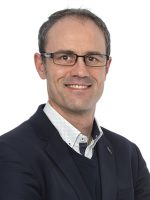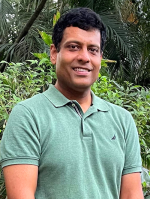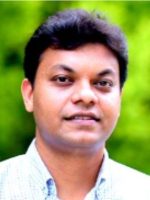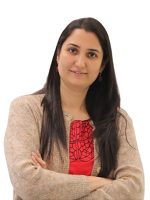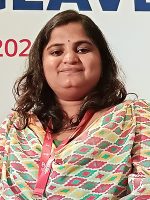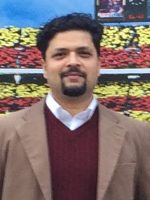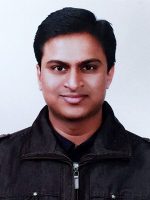Program
Get ready for a dynamic agenda

9:40 – 10:20
Presentation
Extrusion Bioprinting Technologies – Principles and Applications
10:20 – 10:30
Coffee Break
10:30 – 11:00
Presentation
High-precision Biofabrication with Light-based Bioprinting: Principles and Applications
11:00 – 11:15
Q&A, Discussion, Briefing About the Exercises
11:15 – 12:30
Workshop
Hands-on Session with BIO X
About the Session
- Optimization of printing parameters for extrusion- based bioprinting
- Multimaterial bioprinting (STL file) and how to tackle different bioink behaviors
- Dispensing a cell-suspension with EMD/Droplet printing by SPPH
12:30 – 13:30
Lunch Break
13:30 – 14:45
Workshop
Hands-on Session with BIO X6
About the Session
- Modelling of complex biological models, constructing a print with shape generator
- Drawing and Printing a Microfluidic device/vascularised model using multi-material and g-code
14:45 – 16:00
Workshop
Hands-on Session with LUMEN X
About the Session
- 3D Model creation and considerations for light-based bioprinting (PPT)
- Setting up the LumenX for printing Organ-on-a chip and perfusable 3D model
- Printing a cornea-like model
16:00 – 16:15
Cofee Break
16:15 – 17:30
Workshop
Hands-on Session with BIONOVA X
About the Session
- Setting up a multi-well printing of high-resolution scaffolds.
- Printing a grayscale/multi stiffness model
- Printing microneedle patch of different dimension in different wells (setting multi-well printing)
8:30- 9:00
Arrival and Registration
9:00 – 9:20
Presentation
Welcome Address and Introduction to the IISc – CELLINK Excellence Centre
9:20 – 10:00
Keynote
3D (Bio) Printing of Implantable Biomaterials: Scientific Understanding of Process Science and Future Scope
Description
Biomaterials science and biomedical engineering have sustained as one among frontier and growing areas of research and innovation within the engineering science community in the world; considering the number of scientific discoveries and their societal impact. Significant attempts were largely directed to re-create functional musculoskeletal systems with considerable potential to treat various types of human diseases. At the beginning of my presentation, I will present multiscale measurements and analysis to quantitatively understand the process physics of binderjet 3D printing. I will present some of our recent results to demonstrate the efficacy of the 3D powder printing to fabricate Sr-substituted Mg-phosphate bioceramic scaffolds and Zirconia bioceramics, albeit with specific challenges. A major emphasis will be placed on the binder formulation, post-processing treatment, and micro-computed tomography of interconnected porous architecture together with the strength reliability. One of the most recent clinical translational attempts to treat decompressive craniectomy using 3D powder printed patient-specific cranial prosthesis will be presented. Towards the end, the recent results of 3D bioprinting will be presented. It will be shown as how the hydrothermally synthesized nanocrystalline needle-shaped HAp particles (<30 nm) were incorporated into pre-crosslinked gelatin methacryloyl (GelMA) hydrogel to obtain a better combination of compression strength (~ 300 kPa) and elastic modulus (~ 300 kPa) in a designed scaffold. We propose that the inorganic-organic nanocomposite hydrogel could be efficiently assembled to formulate a potential bioink for 3D bioprinting applications towards bone tissue regeneration. This lecture will close by introducing a new concept, Biomaterialomics, which brings together Biomaterials science and Data Science.
10:00 – 10:40
Keynote
Harnessing Cell-instructive Microenvironments for Scalable Biofabrication of Functional Tissues
Description
Coming soon.
10:40 – 11:00
Refreshments and Break
11:40 – 12:20
Keynote
Understanding Cell-cell and Cell Material Interactions in 2D and 3D for Tissue Engineering Applications
Description
Coming soon.
12:20 – 13:30
Lunch and Networking
14:10 – 14:30
Invited Speaker
Novel Cell-derived Bioinks for 3D Bioprinting Applications
Description
Coming soon.
14:30 – 14:50
Invited Speaker
Harmonizing Traditional Wisdom: Sustainable 3D Printing with Plant-derived Bioinks
Description
Coming soon.
14:50 – 16:00
Refreshments, posters and networking
16:00 – 16:40
Keynote
Revolutionizing Healthcare: The Promise of 3D Bioprinting in Biomedicine
Description
In the realm of tissue engineering, 3D bioprinting stands out as a revolutionary technology with immense potential. By allowing precise printing and patterning of cells and matrix materials in three dimensions, 3D bioprinting enables the recreation of tissue structures that closely mimic their natural counterparts. This capability holds the promise of generating tissue-mimetic constructs capable of replicating the functions of specific tissues within the body.
At our lab, we’ve been exploring a biomimetic approach to 3D bioprinting, which involves mimicking the intricate structure and organization of native tissues. One key aspect of our approach is the utilization of decellularized tissue matrix bioink, which provides a natural scaffold rich in extracellular matrix components necessary for cell adhesion, proliferation, and differentiation.
During my talk, I will delve into the various modalities of bioprinting, each with its unique mechanisms and operations. By discussing the differences between these modalities, attendees will gain a comprehensive understanding of the bioprinting landscape and the specific advantages each technique offers.
Furthermore, I’ll share insights into our ongoing research projects at the lab, particularly focusing on our use of extrusion-based 3D bioprinting. This method allows for precise deposition of bioink materials, enabling the creation of complex tissue constructs with tailored properties.
Moreover, I’ll highlight some of our translational works that are progressing toward clinical trials. These projects represent the culmination of our efforts to bridge the gap between cutting-edge research and real-world applications, with the ultimate goal of developing novel tissue-engineered therapies to address clinical needs.
16:40 – 17:10
Presentation
Bioprinting Ignited with Rising Pioneers
About the Session
Join us for an exciting session of Bioprinting Ignited, where two speakers will be selected from the Abstract Submissions, to inspire us with their research. Submit your abstract here to be considered.
19:00
Dinner
The agenda is subject to change.

Contact us
Send us an email by filling in the contact form here.
U.S.: +1 (833) 235-5465
EU: +46 31-12 87 00
India: +91 (0) 98808 58741
Japan: +81 (75)746-3032
Singapore: +65 8750 2284







